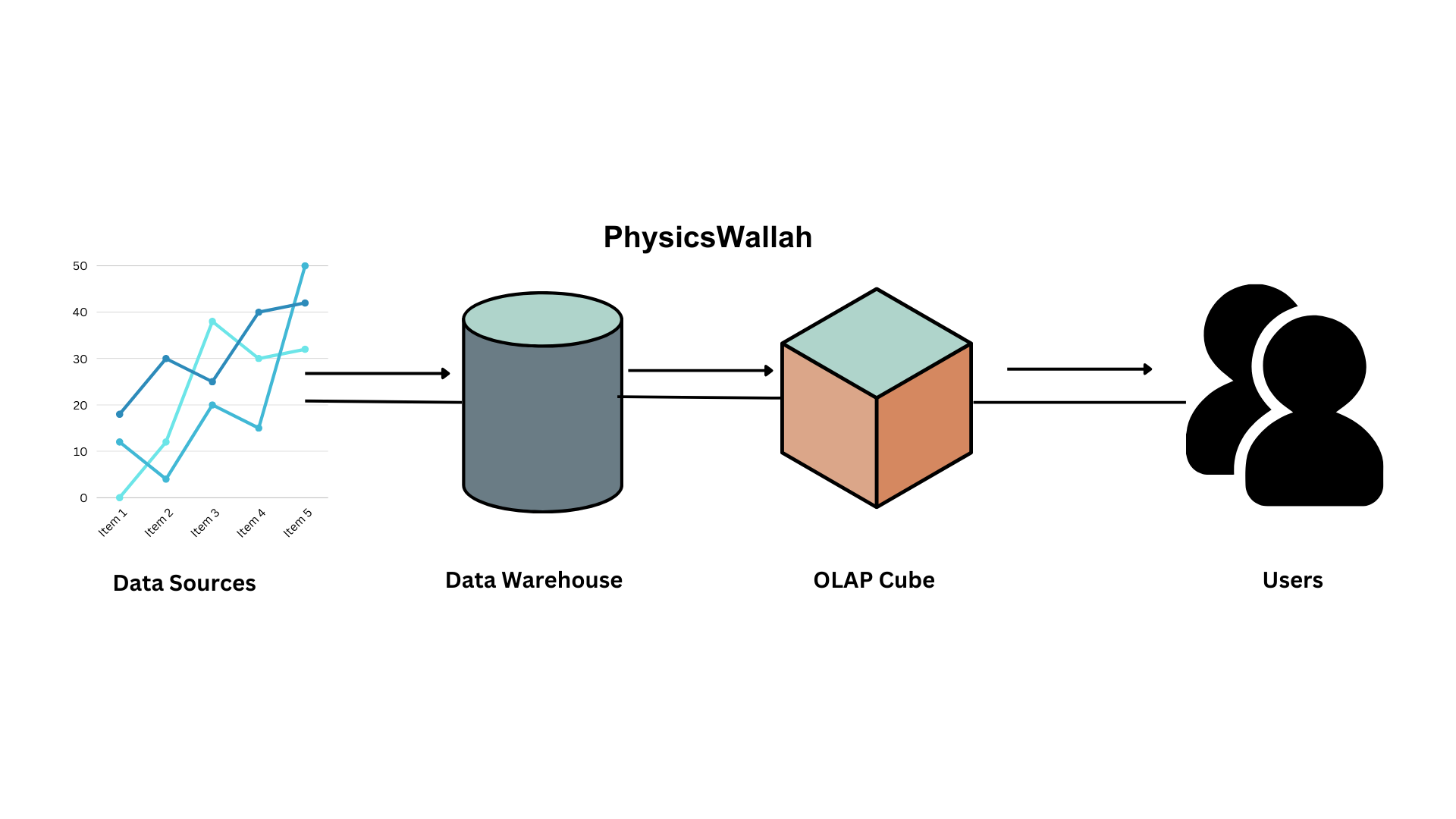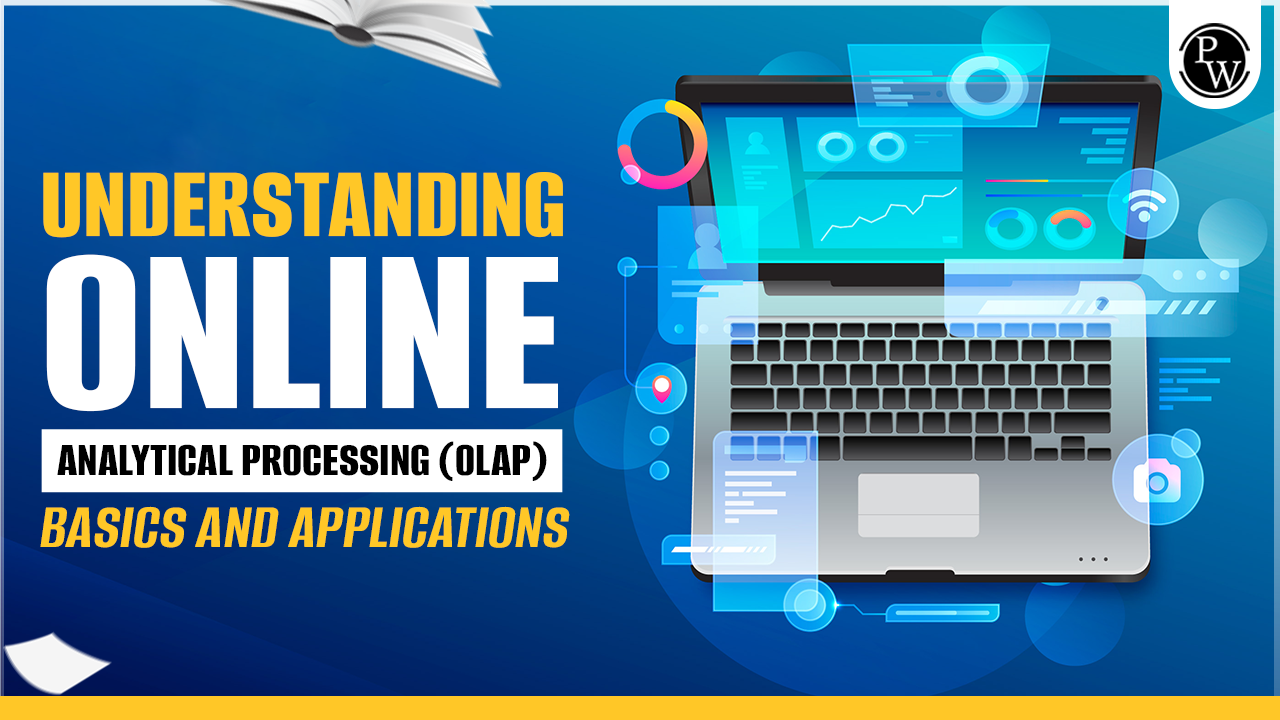OLAP full form stands for Online Analytical Processing, It is a software technology that provides faster access to multi-dimensional data. This software is generally used to extract data for various purposes through querying or other processes.
The main objective of OLAP Online Analytical Processing is to provide faster access to multidimensional data. As everything nowadays heavily relies on data, faster and clearer extraction of data is essential for an adequate analysis of the dataset. Various organizations use OLAP Online Analytical Processing in fields such as accounting, sales, product planning, etc.
Read this article to understand the working, importance, types and architecture of OLAP.
What is Online Analytical Processing?
Online Analytical Processing OLAP is a software tool that helps to analyze business data from different angles. Organizations collect data from various sources like websites, webpages, apps, meters, and internal systems.
OLAP then performs data modeling to organize and group this data to provide useful insights for planning. It is used to perform various data analyses such as trend analysis, cost estimation, prescriptive analysis, etc.
Example Of Online Analytical Processing
Let us take a real-life example of a mobile phone store. They maintain proper data about the types of mobile devices available at the store. They also maintain separate purchase data, such as the name of the handset and total sales value. OLAP helps owners to combine both of these complex data sets in a meaningful manner to answer questions like which mobile is the customer’s favorite, which color got more sales, etc.
OLAP extracts data and uses it for various analyses so that users can easily access or perform a particular task when they have proper insight and then make some decisions.
Importance of Online Analytical Processing
There are many advantages to using online analytical processing OLAP tools. Users who use the OLAP tools can have the following benefits.
- Faster Analysis of Dataset: With the help of OLAP, users can quickly analyze data from multiple analyses and provide a better view of the information contained within the dataset.
- Effective Query Execution: The data stored by OLAP are properly structured, which allows faster query execution. It helps users to retrieve their essential information quickly.
- Enhanced Decision Making: As OLAP provides multiple data views, users can quickly check the data for various purposes. Users can easily analyze data for various trends, customer behaviour, etc.
- User Support: With the help of OLAP, complex datasets are converted into simpler, understandable forms. Even non-technical users can understand data from various angles, parameters, etc., which helps in proper decision-making.
- Proper data analysis: Users can quickly analyze data and solve complex problems.
Working on Online Analytical Processing
Online analytical processing helps users to effectively perform various operations on complex data sets. Let us understand the workings of online analytical processing with the help of a diagram given below.

- OLAP collects data from various sources, such as websites, data warehouses, and relational databases.
- It then uses the ETL (Extract Transform Load) tools to perform data cleaning, data managing, and stores data in an OLAP cube with a proper structure.
- Data presented in an organized manner can be used for analysis and various operations.
- Users can perform various operations such as roll up, drill down, slice, dice, and pivot on this data.
- OLAP cube contains the data extracted in an organized manner, it maintains the data integrity to give the best results possible.
Operations On Online Analytical Processing (OLAP)
Users can perform 5 types of operations on OLAP data, These operations make it easy to explore and analyze data from various perspectives, all of these operations are explained below for your reference:
- Roll-Up- The roll-up operation aggregates data by moving from a detailed level to a higher level, for example- summarizing sales data from cities to viewing totals for each country.
- Drill-Down- Drill-down is the opposite of roll-up. It breaks down data to a more detailed level, such as moving from yearly sales to monthly sales figures.
- Slice- Slice selects a specific dimension to focus on. For example, viewing only the sales data for a particular year from a dataset that contains sales for multiple years.
- Dice- Dice filters data based on multiple dimensions, such as viewing sales data for a specific year and region simultaneously, this helps in making comparisons easier.
- Pivot (Rotate)- Pivot changes the orientation of data, allowing users to view it from a different angle. For example, switching rows and columns to see product sales by region instead of by product type.
Types of Online Analytical Processing
Online Analytical Processing OLAP works in three main ways. These ways include:
1. ROLAP
ROLAP stands for Relational Online Analytical Processing. It uses relational databases to store and manage data.
ROLAP can handle complex data and is suitable for organizations that have large amounts of detailed data. However, since calculations are done in real-time, it can sometimes be slower compared to other OLAP models.
2. MOLAP
MOLAP stands for Multidimensional Online Analytical Processing. It stores data in a multidimensional cube format. Since data is stored in cubes, MOLAP offers quick response times to queries and allows for complex calculations.
It is especially useful for performing quick data analysis and generating reports. However, MOLAP is better suited for smaller datasets and may not be ideal for handling very large amounts of data.
3. HOLAP
HOLAP stands for Hybrid Online Analytical Processing. It combines the best features of both ROLAP and MOLAP. It uses a hybrid approach where summarized data is stored in a multidimensional cube (like MOLAP) for quick analysis, while detailed data is kept in relational tables (like ROLAP).
HOLAP is ideal for organizations that need both high-speed analysis and the ability to handle large, detailed datasets.
What is OLAP Architecture?
The OLAP architecture consists of a multidimensional system that consists of the following elements.
- Data Warehouse: Data from different sources are collected in a data warehouse, which is a type of data storage facility. Data is processed with the help of various OLAP tools to make it ready for analysis.
- ETL (Extract Transform Load): The ETL tools are used to extract data, prepare and store it in a suitable form ready for analysis tasks. With the help of ETL data, information is standardized before being made available for analysis operations.
- OLAP Database: OLAP database is also used to store data, along with the data warehouse. It prevents the data warehouse from being burdened with a lot of data.
- OLAP Cube: OLAP Cube is used to store multidimensional information. It contains data in more than three dimensional models. Once we feed some information to the OLAP cube, it cannot be changed. We need to remodel the entire cube.
OLAP Versus OLTP
People might sometimes get confused in the terms OLAP and OLTP, thinking both of them as the same term but in reality thy are not. So today, Let us analyze some major differences between OLAP and OLTP that will help us to understand both of these terms better..
| OLAP Versus OLTP | |
| OLAP stands for Online Analytical Processing. | OLTP stands for Online Transaction Processing. |
| It handles complete data information. | It only handles the recent data. |
| OLAP is designed to for complex queries and data analysis. | OLTP is used for transaction-oriented analysis. |
| It uses a multidimensional model. | It uses a relational database model. |
| OLAP consists of complex analysis. | It consists of simple create, read, update and delete operations. |
| OLAP size ranges from 1Tb to 100 Pb. Its size is much larger as compared to OLTP. | The OLTP size ranges from 100 mb to 10 gb. |
| It is slower as compared to OLTP. | It consists of faster operations. |
| It only contains read operation. | It contains read and write operations. |
Learn Data Analytics With PW Skills
If you are a dedicated student looking to start your career in the field of Data analytics ahead.
Then, enroll in our PW Skills Data Analytics course to learn each and every concept related to data analytics in a beginner friendly way with the help of practical projects and daily assignments the lectures here are taught in a way that will help you to grab every concept in a clear way.
The key features of this unique 6-month long course include- Live interactive sessions, expert mentorship, daily assignments, doubt clearing sessions, flexibility of recorded lectures, 100% placement assistance, alumni support, networking opportunity and much more. Start your journey today by visiting PWSkills.com
Online Analytical Processing FAQs
Q1. What is Online Analytical Processing?
Ans: OLAP is a software technology that provides faster access to a large set of data. This software is generally used to extract data for various purposes through query data or other processes.
Q2. What are the types of OLAP?
Ans: There are three types of OLAP: ROLAP, MOLAP, and HOLAP. Check the article for more details on the classification of Online analytical processing.
Q3. What is the advantage of using OLAP tools?
Ans: The major advantage of using OLAP is getting higher insights into the data, which helps in various purposes, like forecasting, planning, trend analysis, etc.

